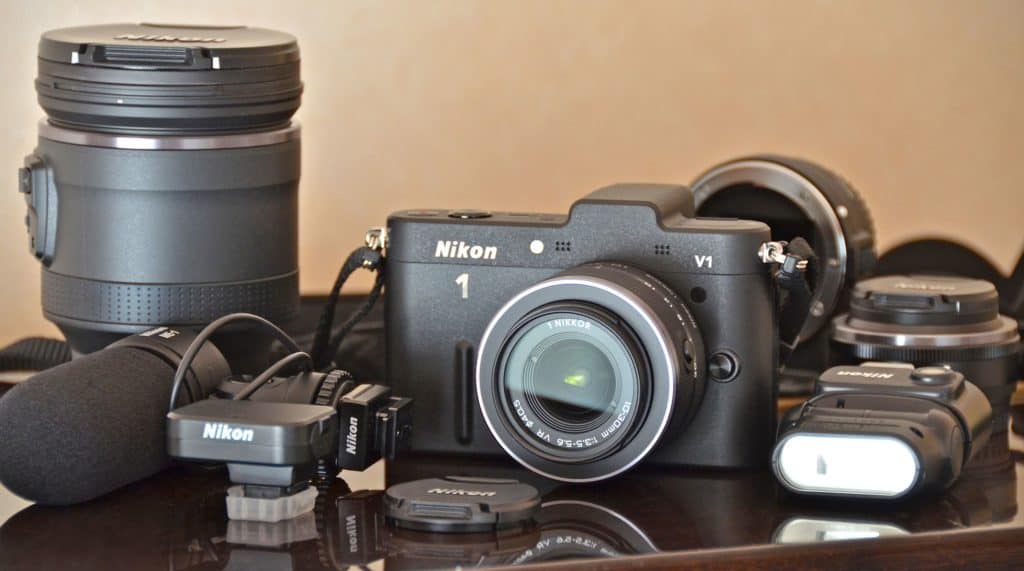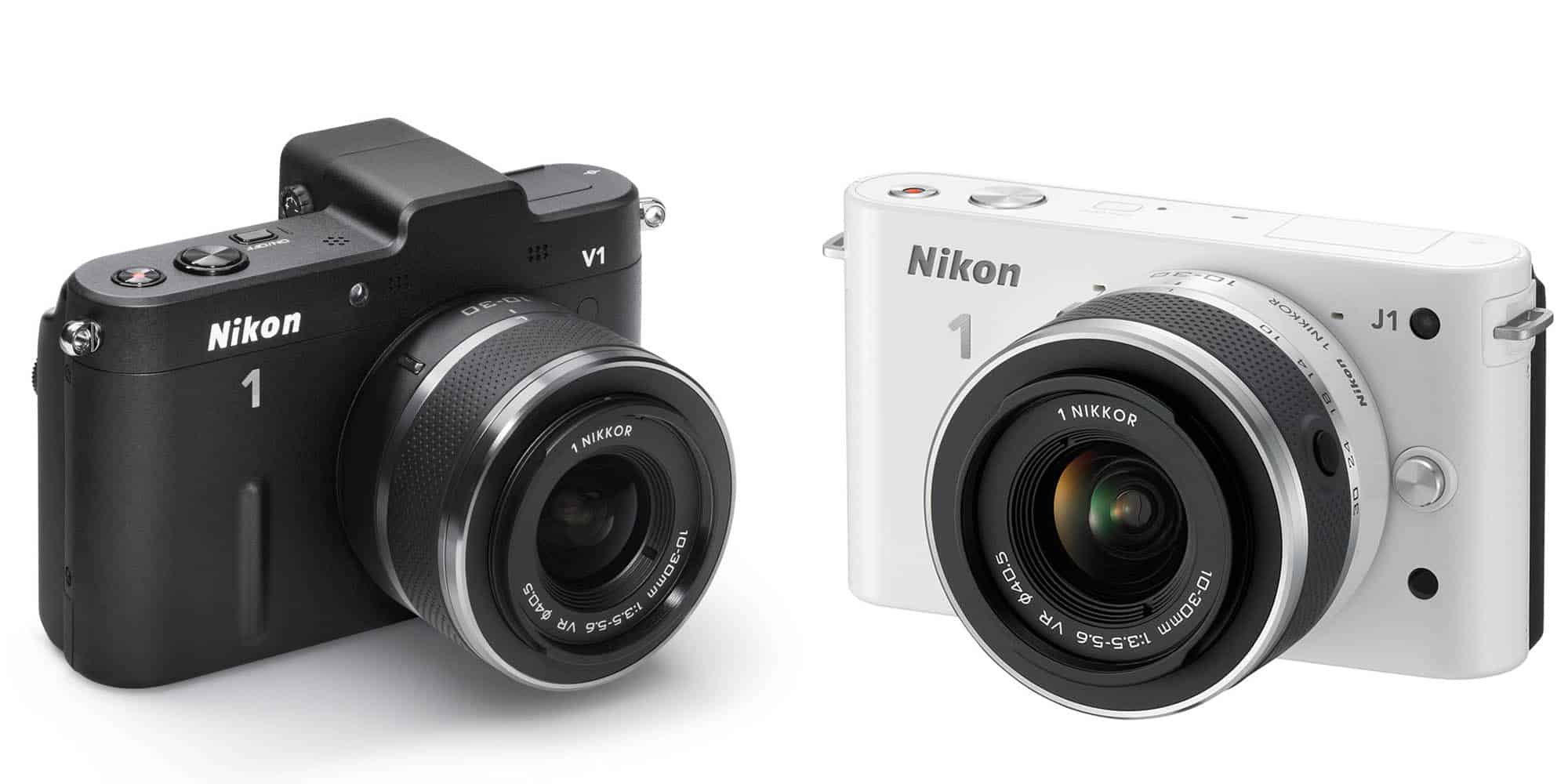Mirrorless cameras are becoming more and more popular, with people slowly dropping their DSLRs in order to benefit from a smaller form factor and superior video capture quality. However, that change wasn’t a fast one, and today we’re going to look back at the Nikon 1, Nikon’s first attempt at a mirrorless camera.
As the name would suggest, the ‘1’ in the name indicates the Nikon 1 is the first of its kind. The Nikon 1 series was in fact the first line of mirrorless cameras with interchangeable lenses. The first two models, the V1 and J1, were released in 2011.
If you could see into the future, Nikon 1 is the camera system you would find.
Fast and portable, our quick and intelligent Nikon 1 cameras have been built from scratch to capture moments as they happen.Nikon
Able to start recording before you fully press the shutter button and continue after you’ve clicked, they deliver images you could never have imagined.
Nikon’s very first camera, released all the way back in 1948, was also named the Nikon 1. So clearly Nikon was very invested in the V1 and J1 models – The first models of the series.
The main selling point was the incredibly fast autofocus performance. It was ahead of its time back then, and even today it is among the top of mirrorless cameras.
However, just one year after its release, the V1 had been selling poorly and its price was slashed all the way down from $899 to $299. What went wrong?

Nikon 1 V1 Specifications
- 10.1 Megapixel CX-format CMOS Image Sensor
- 13.2mm x 8.8mm sensor size
- Nikon 1 Lens Mount
- Full 1080p HD Cinematic Video at 1080/60i, 1080/30p, 720/60p video resolutions (16:9 aspect ratio)
- Slow-motion Video at 400fps / 640×240 resolution and 1200fps / 320×120 resolution
- Hybrid phase detection / contrast-detect Autofocus
- ISO sensitivity 100-3200, expandable to ISO 6400 equivalent
- Mechanical shutter up to 1/4,000 sec, electronic shutter up to 1/16,000 sec; up to 30 seconds slow shutter for both
- Flash Sync Speed 1/60 (electronic shutter) and 1/250 (mechanical shutter)
- Built-in intervalometer
- Dimensions 4.4″ x 3.0″ x 1.7″ / 113mm x 76mm x 43.5mm
- Weight: 10.4oz (294g)
What Went Wrong With The Nikon 1?
The disappointing sales performance of the Nikon 1 can be put down to a few factors. Lets take a look at the flagship V1 (The J1 was a cheaper model with lower specifications).
Price
At $899, the Nikon V1 was one of the most expensive mirrorless cameras in the high end mirrorless camera market.
The Nikon 1 did have some features that arguably justified its high price tag. It had the world’s fastest autofocus at the time, with 10 fps (photo and video) based on hybrid autofocus technology. It also had a 60fps continuous shooting speed which was faster than any other camera that used interchangeable lenses. Nowadays, using mirrorless cameras for video is less popular than recording using an iPhone in combination with the best iPhone gimbal, but back in 2011 smartphone cameras were very poor.
It could also capture slow-motion video in up to 1200fps with its EXPEED 3 image-processor, which could process images at 600 megapixels a second.
Despite that, the competition was not only cheaper, but superior in many technical aspects. At its price point, the Nikon V1 was doomed to sell poorly.
Small CX Sensor
Nikon was late to the mirrorless party and by the time the V1 and J1 were announced, the cameras were already dated compared to cameras from other big manufacturers.
The Micro 4/3 standard was the most widespread at the time, with the likes of Panasonic and Olympus pushing the standard. Meanwhile, Sony and Canon were focusing on developing the even bigger APS-C sensor mirrorless cameras.
And yet, Nikon had decided to go with their own 2.7x crop factor CX sensor, smaller even than the 4/3 standard.
Poor Ergonomics
The Nikon 1 sounded like you were buying into something special, a piece of Nikon’s history. Some people praised its classic look, although it could be argued it looked too much like a plain compact digital camera.
However, from a photographer’s standpoint, shooting with the Nikon V1 and J1 was not a great experience. The camera was small and flat, making it much less ergonomic than what most people willing to invest in a $899 camera were used to.
Nikon 1 Lenses And Accessories
Despite the Nikon 1 being commercially unsuccessful, it wasn’t a bad camera. I myself have one, and some of its lenses are very nice.
The 70-300mm f/4.5-5.6 lens is an amazing telephoto zoom lens, and combined with the fast autofocus speed, made the Nikon 1 a very viable sports and wildlife photography setup. Meanwhile, the 32mm f/1.2 prime is an excellent portrait lens.
Accessory wise, the Nikon 1 made the mistake of making the accessories incompatible with their DSLR accessories and vice versa. This meant you would have to buy your complete setup of flashes, microphones etc. from scratch–adding a lot to the already high initial price tag.
Nikon In The Mirrorless Camera Market Today
Nikon may have got things wrong with the Nikon 1 lineup, but they learned from their mistakes and right now they are producing some of the best full-frame mirrorless cameras in the market.
Their focus is now on the high-end professional market, targeting those looking to replace their DSLRs. The Nikon Z6 and Z7 are among the best high-end mirrorless cameras today.
